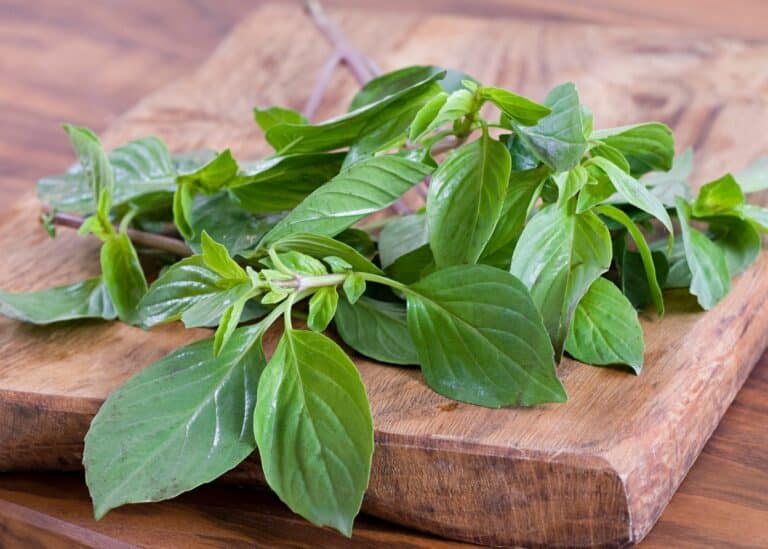Ingredients
Scale
- 1 bunch fresh basil
Instructions
- The Water Method. This method is ideal for storing bunches of fresh basil that are still on the stem. It will keep your leaves fresh, vibrant, and full of life! Think of your basil as a bunch of flavorsome flowers. Carefully trim the stems and remove any bruised leaves. Place the stems into a glass of fresh drinking water. Cover the leaves with a bag. Place in the refrigerator.
- Salad Greens Method. Carefully remove the leaves from the stems. Pat the leaves dry or spin dry in a salad spinner. The leaves have to be as dry as possible. On a clean and dry paper towel, lay the leaves out. Gently roll the leaves up in the paper towel. Place the paper towel in an airtight container or a resealable bag and store it in the refrigerator.
- Freezing. Bring a pot of water to boil on the stovetop. Tear the basil leaves from the stem and blanch in boiling water for two seconds. Transfer the leaves immediately to an ice bath. Pat the leaves dry or spin dry in a salad spinner. The leaves have to be as dry as possible. Place the basil leaves in layers on parchment or wax paper and store them in a freezer-safe container.
- Frozen Basil Cubes. Tear the leaves from the stems and carefully wash them with cold water. Pat the leaves dry or spin dry in a salad spinner. The leaves have to be as dry as possible. Roll the leaves up in a cigar shape, and slice thinly. Place equal amounts of leaves into each compartment of the ice-cube tray. Slowly pour olive oil into each compartment filling the trays with oil; use a spoon to push any leaves down until covered with the oil carefully. Freeze the trays. Once it is frozen, remove the herb cubes and store them in a resealable bag for added freshness.
- Dried Basil. Get a baking sheet ready, pre-heat your oven to 95°F degrees, or prepare your dehydrator. Remove the basil leaves from the stems. Wash the delicate leaves carefully in a bowl of cold water. Pat the leaves dry or spin dry in a salad spinner. The leaves have to be as dry as possible. Spread the leaves out on the baking sheet or the dehydrator sheet. Try not to overlap the leaves. Place in the oven for about 6 hours; frequently check to ensure that the leaves are drying and not burning. If you are using a dehydrator, make sure that you use the recommended herb setting for your dehydrator. Allow the leaves to cool correctly. Crumble the leaves using a mortar and pestle, with a coffee grinder, or by hand. Store the dried leaves in an airtight container.
Notes
- Use any of the five methods above for storing fresh basil. Each method will take a different amount of time to complete.
- Prep Time: 5 minutes
- Cook Time: 5 minutes
- Category: Preservation
- Method: Various
- Cuisine: Healthy
- Diet: Vegan
Nutrition
- Serving Size: 1/4 bunch of fresh basil
- Calories: 5
- Sugar: 0.1 g
- Sodium: 0.9 mg
- Fat: 0.1 g
- Saturated Fat: 0 g
- Carbohydrates: 0.6 g
- Fiber: 0.3 g
- Protein: 0.7 g
- Cholesterol: 0 mg
